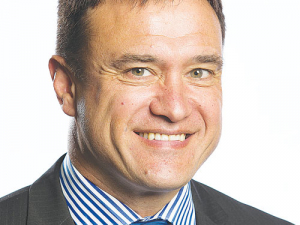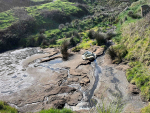A couple of myths need correcting over the proposed plan change for cleaning up the Waikato and Waipa rivers.
Namely that the proposal seeks to ‘protect’ intensive farming and that this idea is Waikato Regional Council’s fault.
The short response is that the proposal, if implemented, wouldn’t lock in ‘grandparented’ nitrogen discharge rights as suggested, and that the plan change was written by a multi-sector group, not the council.
If we are to get the final shape of the plan change right it’s important that all parties have a clear-sighted view of what’s proposed and stick to the facts during the necessary community debate on the issues. So, for the record, the following detailed information is important to bear in mind.
Healthy Rivers/Wai Ora: Proposed Waikato Regional Plan Change 1 was notified for public submissions by the council in October last year. Though the council notified it, the policy was developed over two-and-a-half years by a collaborative stakeholder group (CSG). Effectively council handed the policy-writing pen to our community and the sectors and industries most affected by the goal of improving water quality. This process required much deliberation, consultation, collaboration and finally consensus between all parties, to create ownership and foster behaviour change at a community, sector and industry level. The people most affected need to own both the problems and the solutions: we all take responsibility and we all own the solutions.
The resulting plan takes us on just the first decade of an 80-year journey to restore and protect the health of our rivers. We are required to do so collectively under the Government’s national policy statement on freshwater, and Te Ture Whaimana o Te Awa o Waikato, the Vision and Strategy for the Waikato River introduced under Treaty of Waitangi settlement legislation. In short, to do nothing is not an option; other regions have already implemented plan changes for water quality and our plan change has balanced the environmental, economic and social implications.
The plan seeks to address the four contaminants causing problems for the rivers and lakes of the Waikato and Waipā catchments. Nitrogen is one; the others are sediment, bacteria, and phosphorus.
Urban communities and manufacturers have been working on solutions to address these contaminants and others from point sources like factories and sewage treatment facilities for at least 40 years. These are already regulated by the existing Waikato Regional Plan; they need resource consent and must be treated to a high standard. Urban ratepayers across the region are now spending at least $60 million dollars a year to achieve this.
Rural communities and landowners have done much good work over this time but there has still been major intensification within the catchments and, in the odd case, inappropriate land use.
Over the last ten years we have seen an area six times the size of Hamilton city converted from forestry to pasture and this now adds a lot of contaminants to our waterways. Hence the plan focuses on rural land, not just dairy or drystock, and it addresses the impacts of horticulture and forestry on our waterways.
The suggestion that Healthy Rivers/Wai Ora: Proposed Waikato Regional Plan Change 1 protects the highest nitrogen dischargers or protects intensive farming long term is not correct.
The proposed plan tackles the contaminants through two components: the development of farm environment plans (FEPs) and the provision of a nitrogen reference point. FEPs are property-specific and include time-specific actions landowners will undertake to reduce the risks of contaminant loss, including nitrogen. Landowners more than anyone else know how to manage the contaminants within their particular farming system. Every farm will be different, but what the plan change requires is that those discharging the most must do the most to manage their contaminants.
We know the use of nitrogen reference points will be robustly debated at hearings next year but let’s understand the facts of how the plan proposes nitrogen be managed.
It requires farmers to calculate their current nitrogen loss. The top 25% of nitrogen emitting farms are then required to reduce their losses. The remaining 75% of farms are not required to reduce their losses and can carry on at existing levels. In short the highest emitters have to make reductions while everyone else can continue to farm as they are. The intention is also to address other discharges in future plan changes.
In writing this plan the CSG was clear: the preference was always to allocate contaminant discharge rights at a property scale, matching land use to land capability. But, in fact, we as a community don’t currently have the data to implement that. This plan change allows us to collectively gather that knowledge so at the next plan change there will be more options available to review allocation.
This plan, after all, is just the first step on an 80-year journey for our region to achieve the water quality we all aspire to and through our processes we hope to make it workable for all our landowners.
In the meantime, we have to start taking steps to reduce contaminant losses if we want to improve our water quality. The longer we delay the harder and more expensive the task will be.
• Vaughan Payne is chief executive of Waikato Regional Council.


















